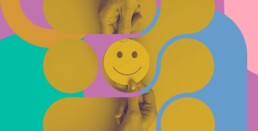
The Design Dilemma: Sourcing Ideas vs. Trusting the Professionals
In the ever-evolving landscape of design, companies face a critical decision: should they source design ideas internally or entrust the creative process to professional designers? This question strikes at the heart of design maturity and the value of expertise in the creative industry. Let’s unpack this complex issue and explore why partnering with a design agency for ideation might be the key to unlocking truly innovative solutions.
The Allure of In-House Ideation
It’s understandable why companies might be tempted to generate design ideas internally. After all, who knows the brand better than the people living and breathing it every day? There’s a certain comfort in maintaining control over the creative direction, and it can feel more cost-effective at first glance.
However, this approach comes with its own set of challenges:
Design Myopia: When teams are too close to a project, they may struggle to see beyond their own biases and preconceptions, limiting the potential for truly groundbreaking ideas.
Limited Design Vocabulary: Without exposure to the broader design ecosystem, in-house teams may inadvertently restrict themselves to a narrow range of solutions.
Pinterest Paralysis: Relying too heavily on platforms like Pinterest for inspiration can lead to derivative designs that lack originality and fail to differentiate the brand.
The Professional Designer’s Edge
Professional designers bring a wealth of experience and resources to the table that extends far beyond what most in-house teams can offer:
Design Fluency: Seasoned designers speak the language of design fluently, understanding the nuances of visual communication, user experience, and brand storytelling.
Diverse Inspiration Sources: While Pinterest has its place, professional designers draw inspiration from a vast array of sources, including art, architecture, nature, and emerging technologies.
Cross-Industry Insights: Agencies work with clients across various sectors, allowing them to cross-pollinate ideas and bring fresh perspectives to each project.
Design Thinking Methodology: Professional designers are well-versed in design thinking principles, enabling them to approach problems holistically and generate innovative solutions.
The Design Maturity Spectrum
Understanding where your company falls on the design maturity spectrum is crucial. Design maturity encompasses not just the ability to create aesthetically pleasing visuals, but also the capacity to integrate design thinking into broader business strategies.
Companies at the lower end of the spectrum often view design as a superficial “make it pretty” exercise. They may be more likely to source ideas internally or provide rigid directives to designers, limiting the potential for transformative outcomes.
In contrast, organizations with high design maturity recognize design as a strategic asset. They understand the value of partnering with design professionals from the ideation stage onwards, leveraging their expertise to drive innovation and create meaningful user experiences.
The Trust Factor
Entrusting your design process to professionals requires a leap of faith, but it’s one that often pays dividends. When companies hire a design agency, they’re not just paying for pretty visuals—they’re investing in a wealth of knowledge, creative problem-solving skills, and a proven design process.
By involving designers in the ideation phase, companies benefit from:
Divergent Thinking: Designers are trained to explore multiple solutions, pushing beyond the obvious to uncover truly innovative ideas.
User-Centered Approach: Professional designers prioritize the end-user experience, ensuring that solutions are not just visually appealing but also functional and intuitive.
Brand Elevation: Experienced designers can help evolve and elevate your brand, finding new ways to express your values and connect with your audience.
The Pitfalls of “Implementation Only” Engagements
When companies come to designers with fully-formed ideas and request mere implementation, they’re often shortchanging themselves. This approach:
Limits Creative Potential: By bypassing the designer’s ideation skills, companies miss out on potentially game-changing concepts.
Ignores Expertise: It undermines the designer’s ability to contribute strategic insights and solve complex problems.
Results in Suboptimal Designs: Without the benefit of a designer’s full creative process, the end product may fall short of its potential.
Embracing Collaborative Ideation
The most successful design outcomes often result from a collaborative approach. By partnering with a design agency from the outset and involving them in the ideation process, companies can:
Leverage Design Expertise: Tap into the designer’s deep well of knowledge and creative problem-solving skills.
Foster Innovation: Create an environment where diverse perspectives collide, sparking truly innovative ideas.
Ensure Brand Alignment: Develop solutions that not only look great but also align seamlessly with the brand’s values and objectives.
.
In conclusion, while it may be tempting for companies to source design ideas internally, partnering with professional designers for ideation can lead to far superior outcomes. By recognizing the value of design expertise, embracing design maturity, and fostering trust in the creative process, organizations can unlock the full potential of design to drive innovation, enhance user experiences, and achieve business objectives.
Remember, when you hire Obsessed Agency, you’re not just getting a set of hands to execute your vision—you’re gaining a strategic partner capable of elevating your brand and transforming your business through the power of design.








